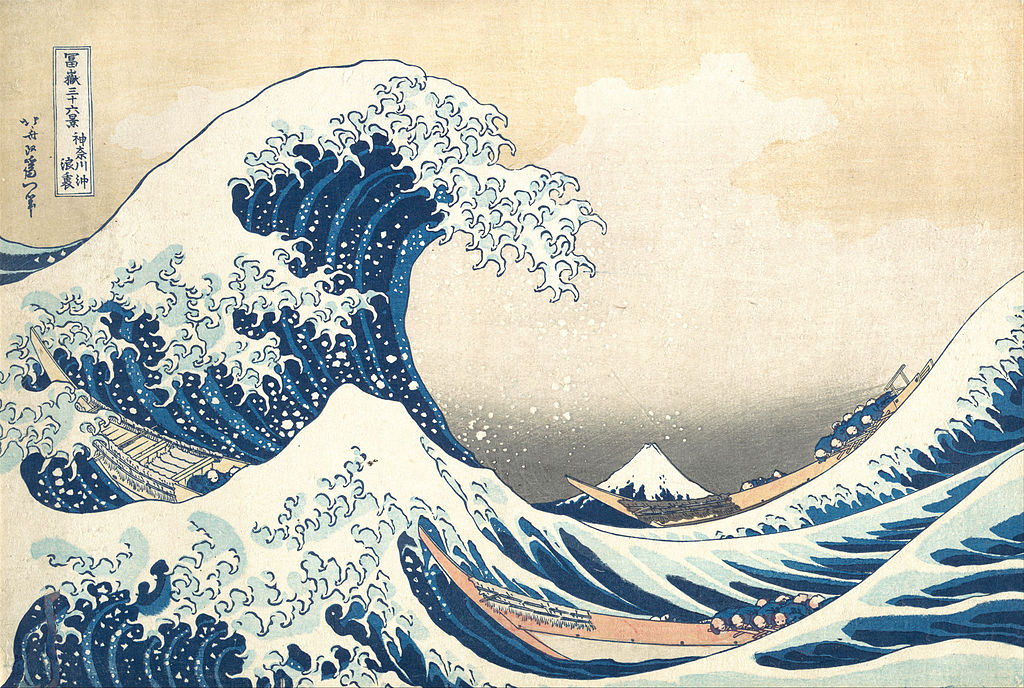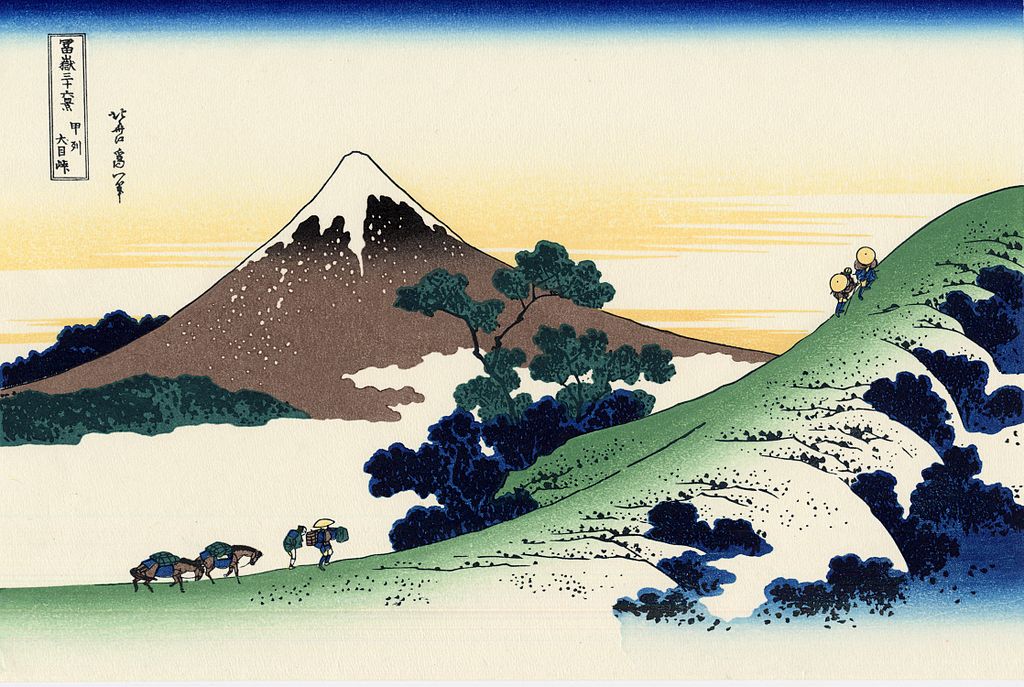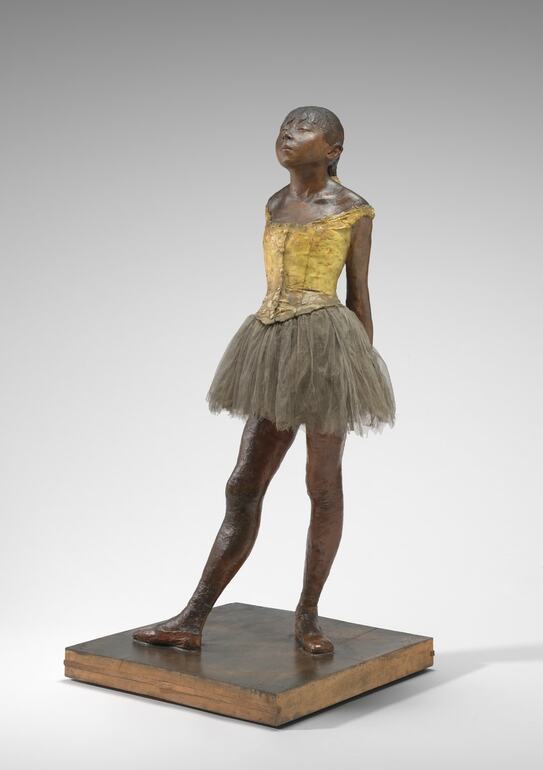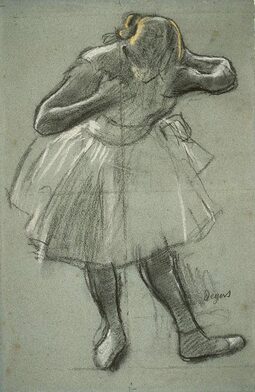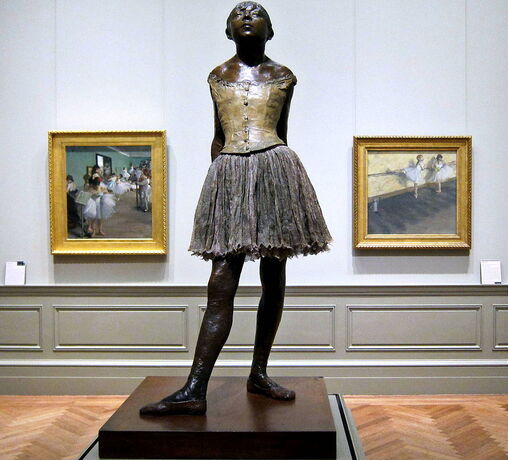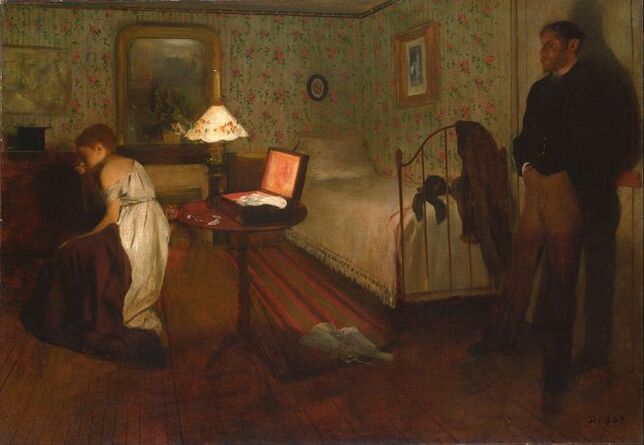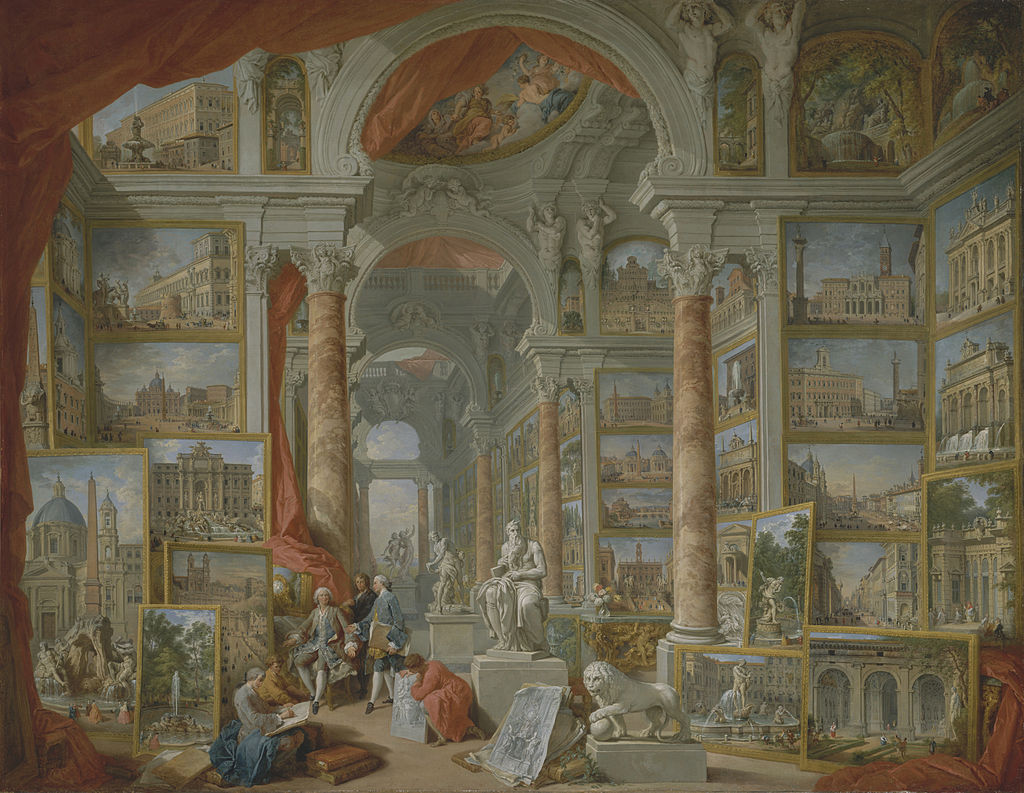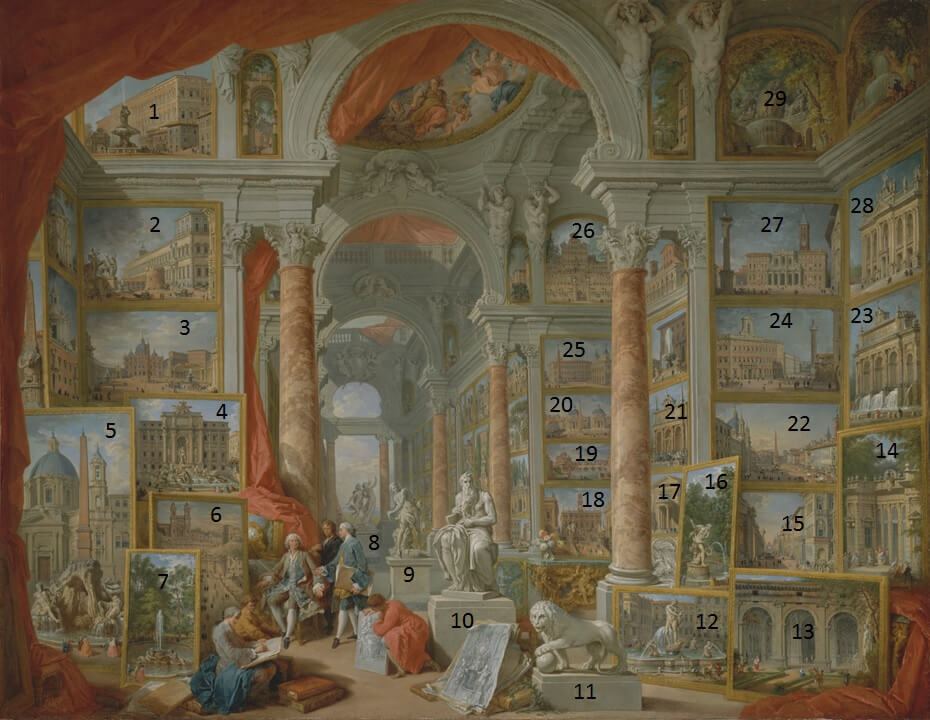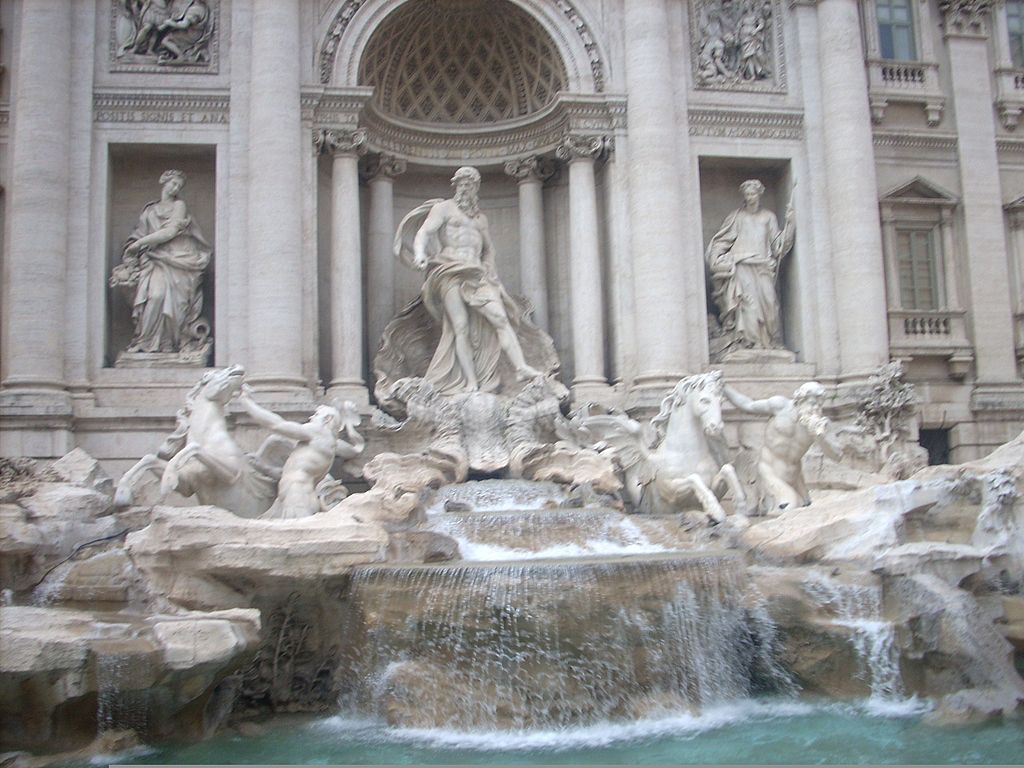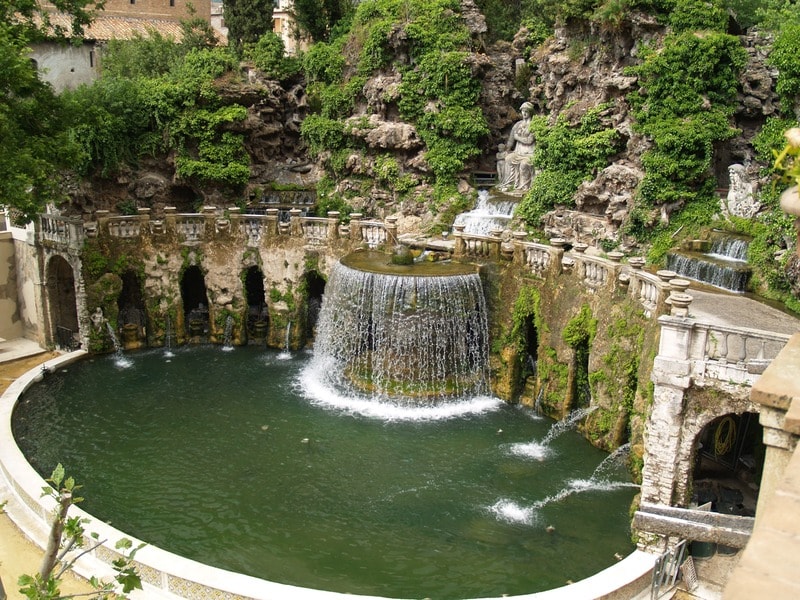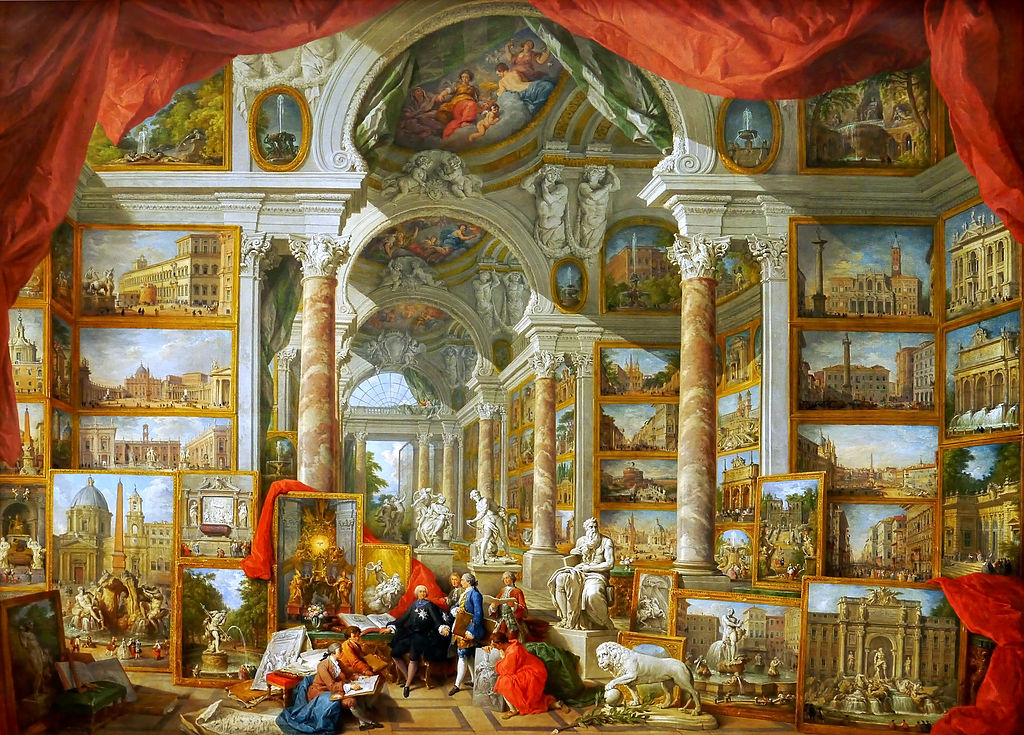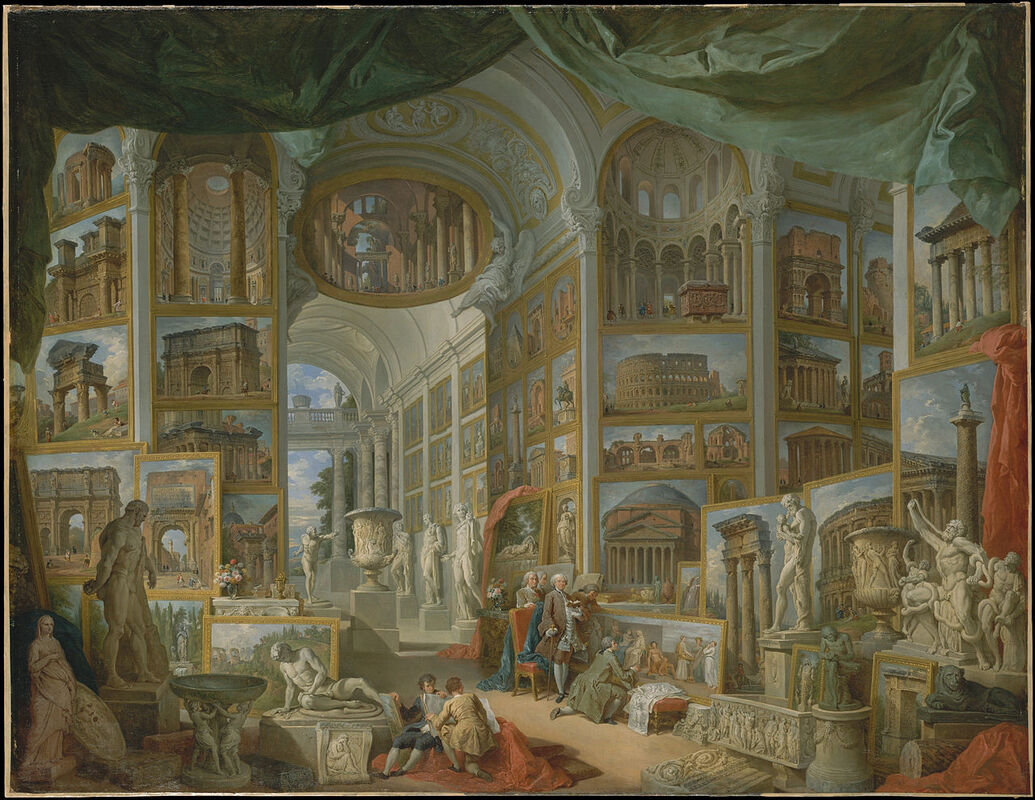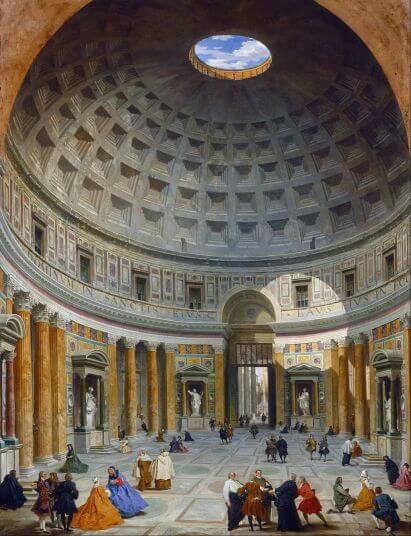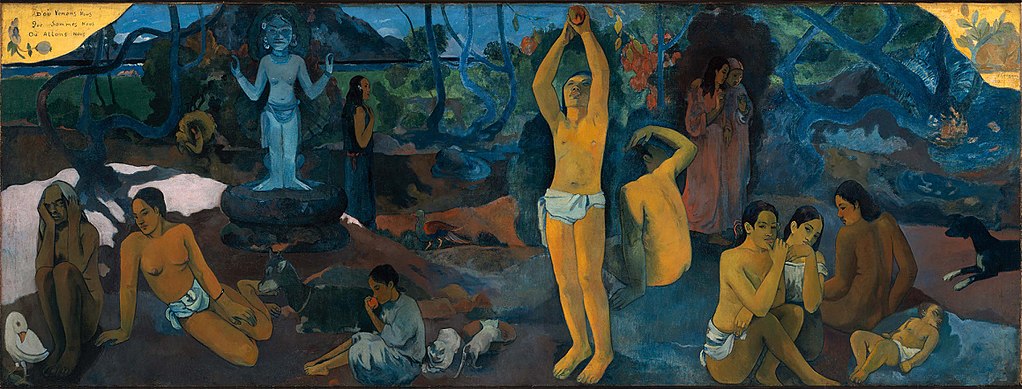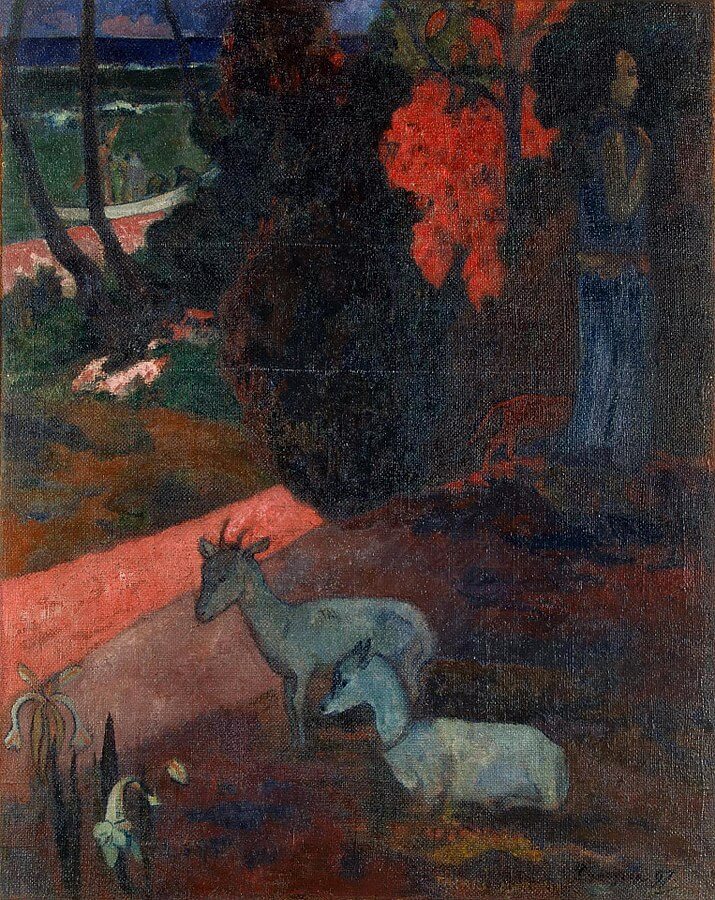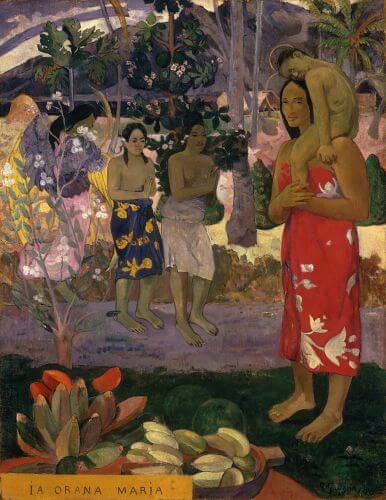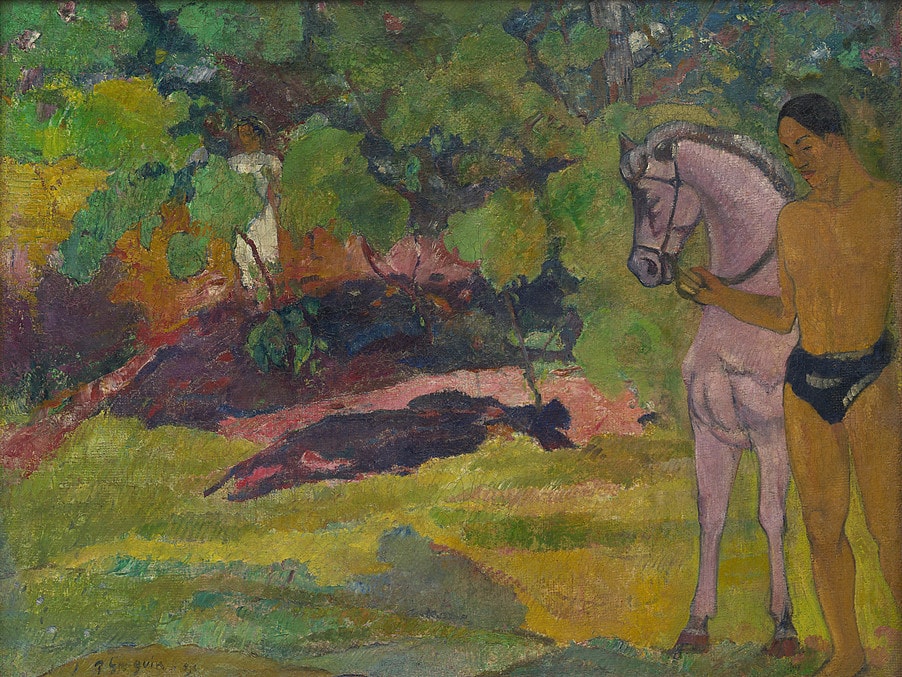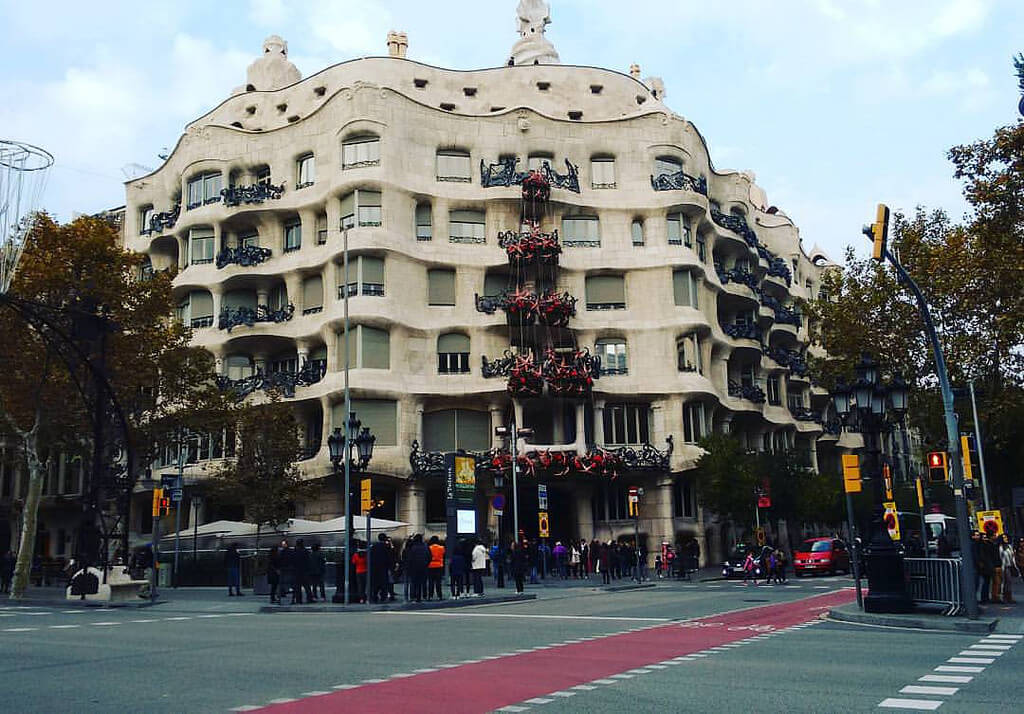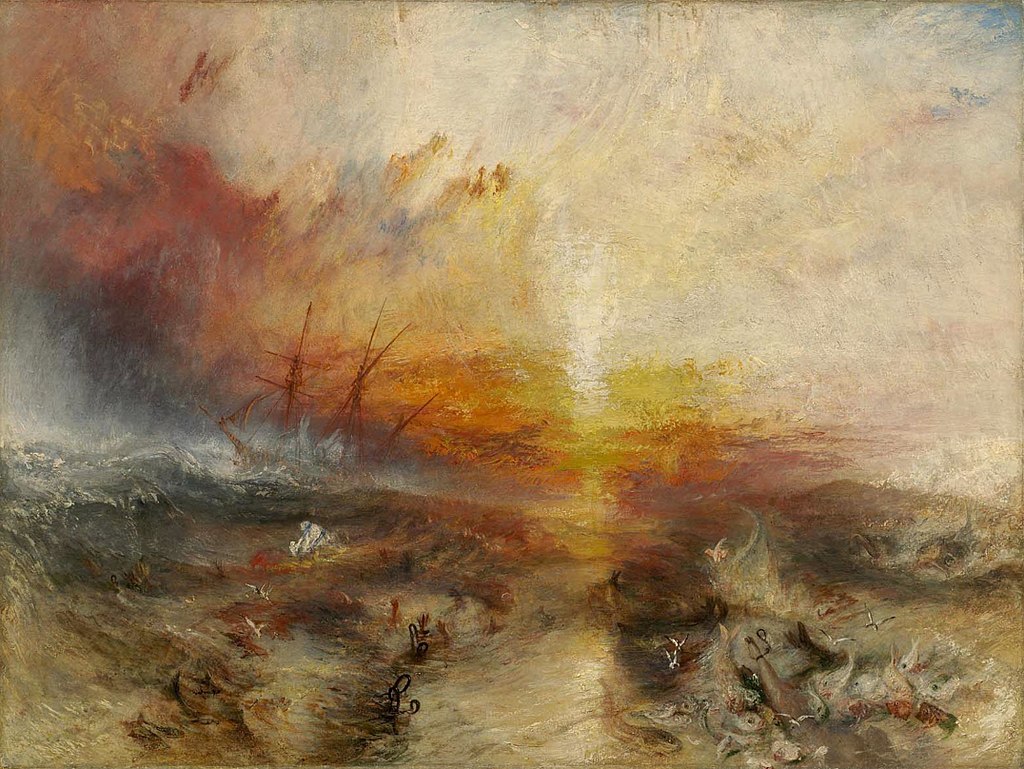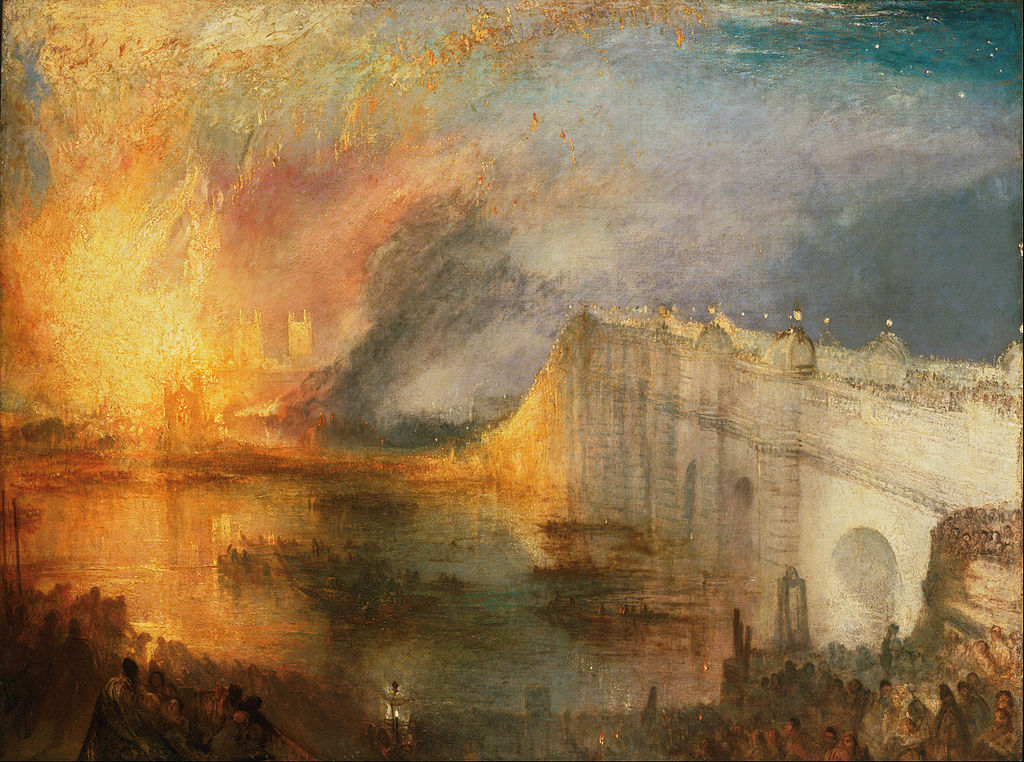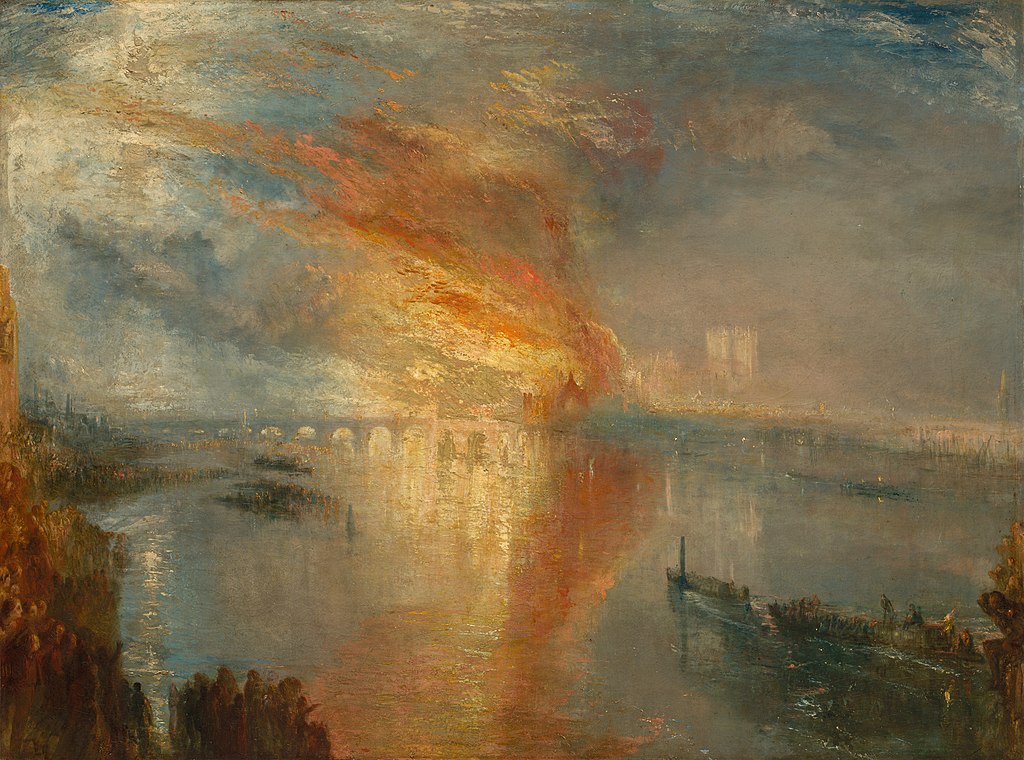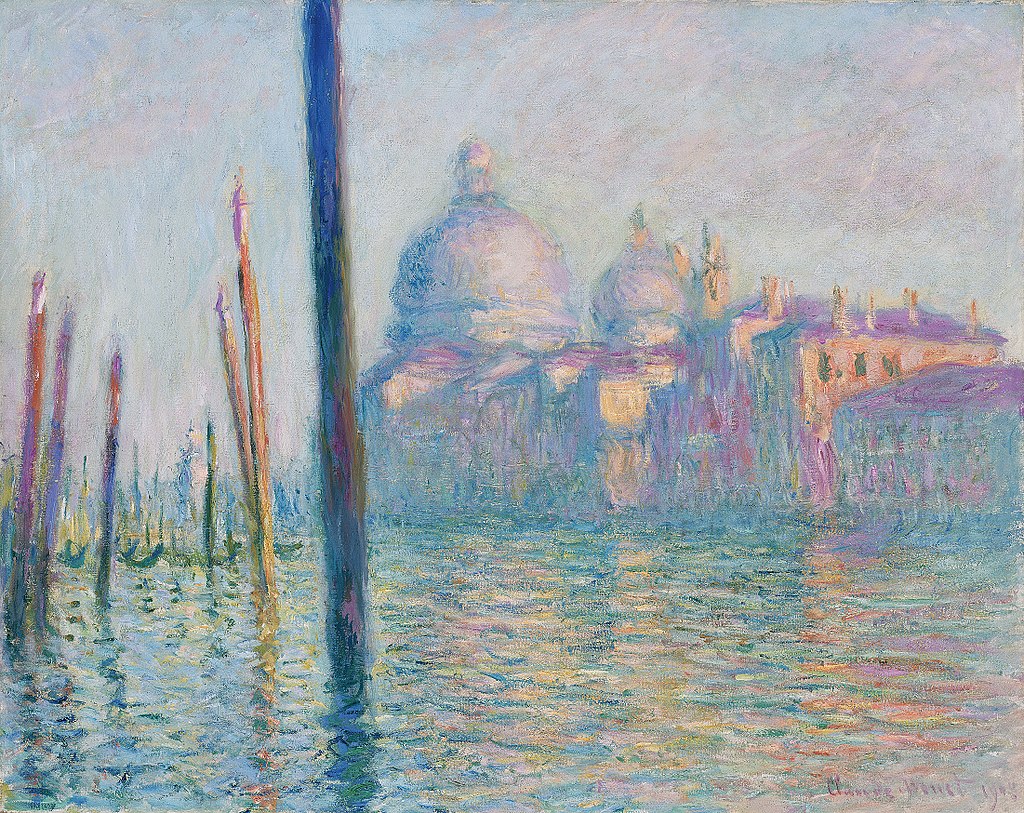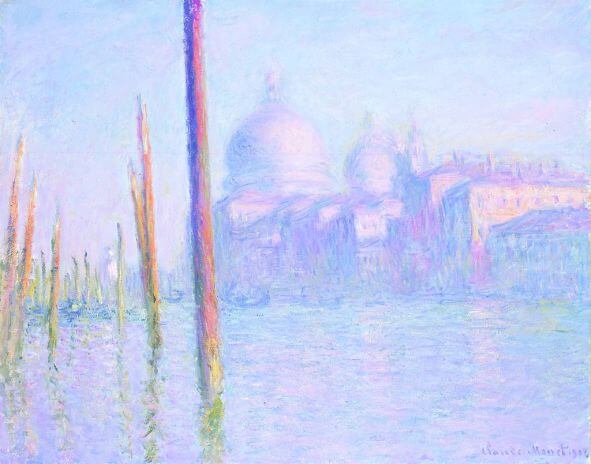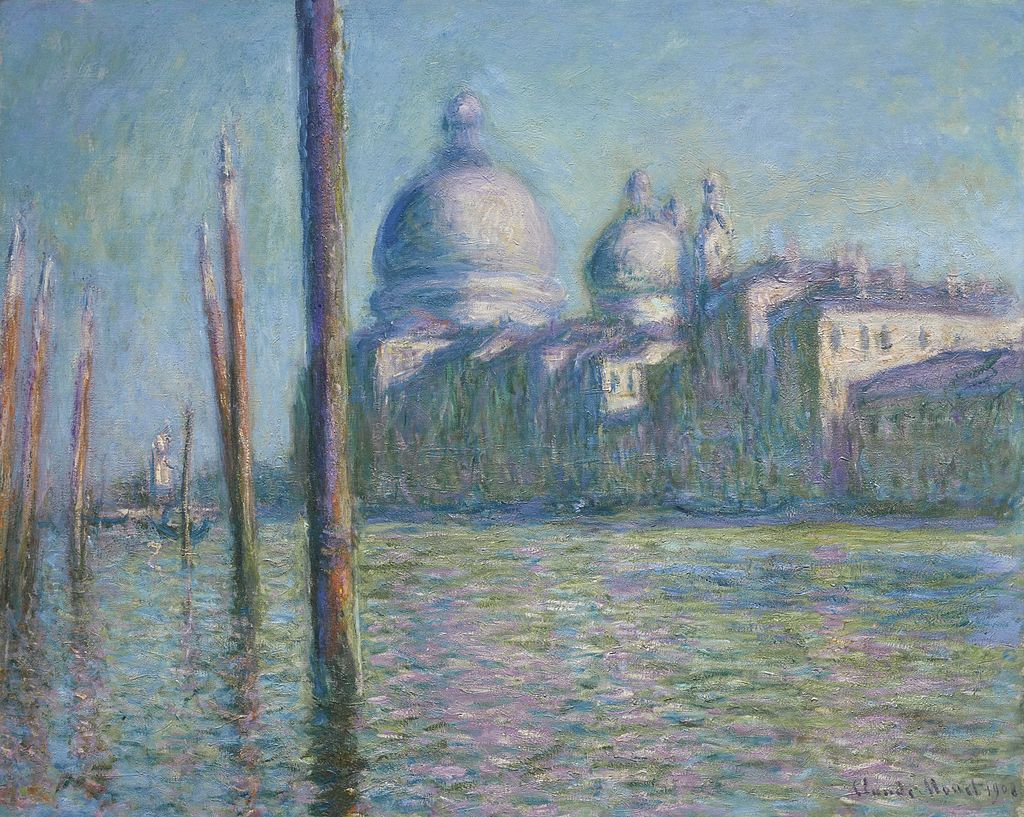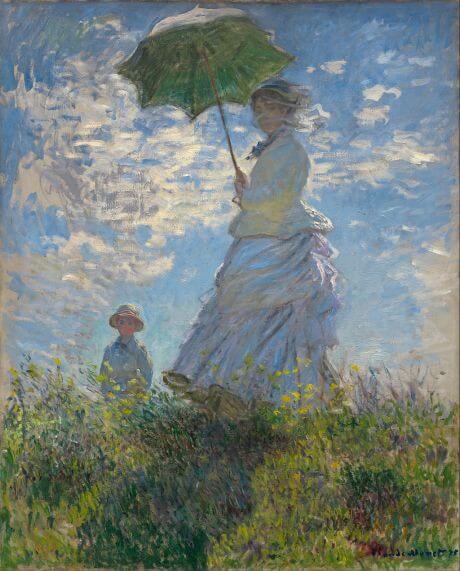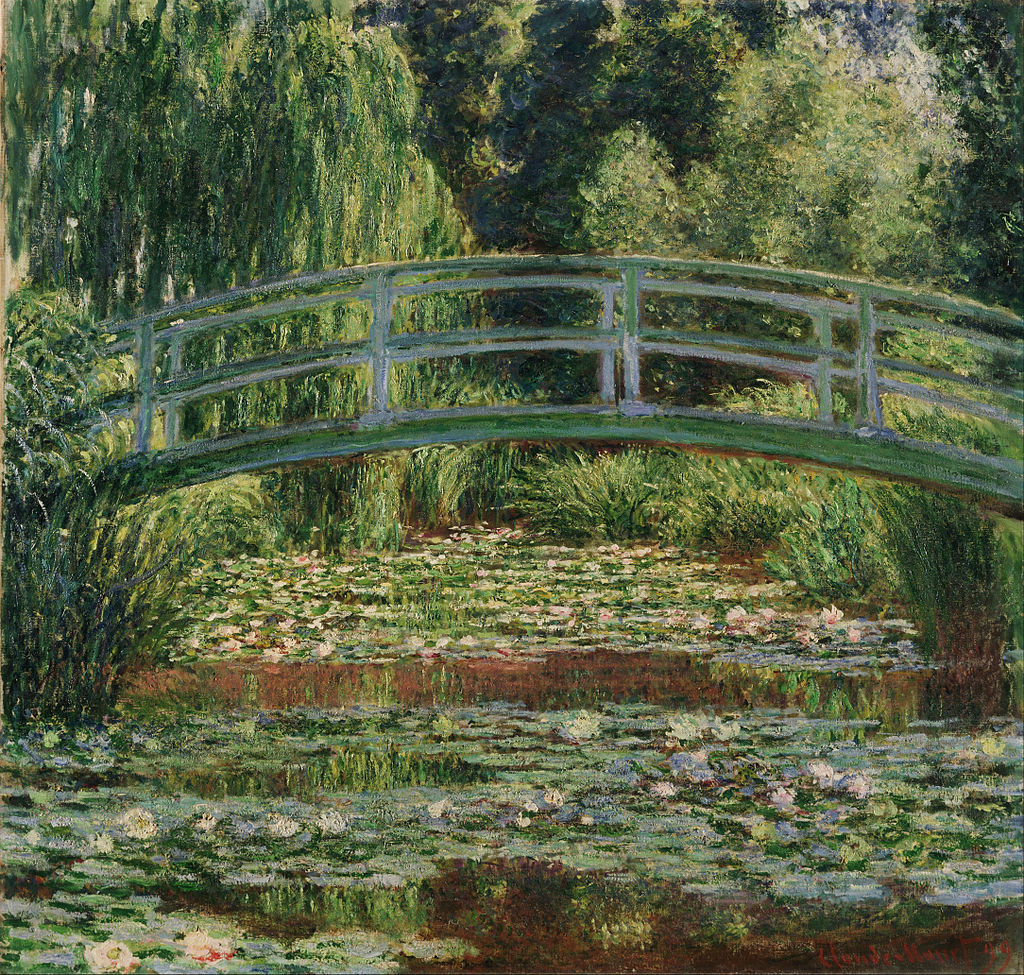|
Where? Many museums own a woodblock print of this work, including the Art Institute of Chicago, British Museum, Metropolitan Museum of Art, and the Museum of Fine Arts in Boston, but this work is usually not on permanent display.
When? 1829-1832 What do you see? A giant wave off the shore of the Kanagawa prefecture dwarves three boats — one in the foreground, one in the middle ground, and one in the background. The perfect curves of the wave’s form the relentless rocking feeling that terrifies the occupants and rowers on the tiny boats. Perhaps they are fishermen. Above them, it’s raining seafoam, represented with delicate white specks and claw-like crests. In the distance, standing before a grey haze is Japan’s great Mount Fuji. The mountain balances the downward curve of the wave while emphasizing the enormousness of the wave. Backstory: Hokusai created The Great Wave as part of a series of landscapes titled Thirty-Six Views of Mount Fuji (Fugaku sanjurokkei). Mount Fuji, a sacred spiritual site in Japanese culture, appears in every print in the series, but is not conspicuous in every piece. Often, it appears in the background of the prints such as in the case of The Great Wave off Kanagawa. The scenes that Hokusai created surrounding Mount Fuji were drastically different, varying in season, setting, and overall atmosphere. There are serene scenes such as Inume Pass in the Kai Province, lonesome scenes such as Tama River in Musashi Province, and intense scenes like The Great Wave. Showing the important landmark from several locations, Hokusai emphasized the permanence and stillness of Mount Fuji. No matter the condition of life, the mountain would remain exactly where it stands.
Ukiyo-e: Ukiyo-e, meaning “pictures of the floating world,” was the major art style of the Edo period, which was popular between 1603 and 1868 in Japan. During this time, under the rule of the Tokugawa shogunate, ideas like sensuality and tranquility were promoted, prompting the creation of a genre of art depicting leisurely daily life.
Ukiyo-e began on silk screens depicting life in the urban sphere. The genre blew up when ukiyo-e artists began creating woodblock prints. The medium allowed for mass production and mass consumption. These images of courtesans, kabuki, daily activity, and nature soon spread to Europe once Japan opened its ports in 1853 spurring the Impressionist movement and inspiring artists such as Van Gogh, Gauguin, and Toulouse-Lautrec. Who is Hokusai? Katsushika Hokusai was a prominent printmaker and painter of the Edo period. He was born in 1760 and died in 1849 after a long career of art making. When he was 19 years old, he studied under Katsukawa Shunsho who gave him the skills to begin producing his own unique artworks when he was 20. After a dispute with his teacher, Hokusai ended his studies and began making sketches for woodblock prints that would be turned into picture calendars alongside his own prints of portraits of women. Soon he became a major player in the ukiyo-e movement, competing with Hiroshige and creating illustrations and paintings for popular fiction books. A practicing Buddhist, Hokusai paid special attention to nature, and, in his own time, he produced many landscape paintings and prints including Thirty-Six Views of Mt Fuji in which his unique style became more prominent. He also painted birds and flowers with bright, intense colors. Hokusai was careful to depict daily life without any exaggerations but with great beauty. Towards the end of his life, Hokusai grew weak in both his health and skill. Nonetheless, before his death at the age of 89, Hokusai created numerous works depicting mystical images such as demons and dragons, a change of pace from his typically realist style. Fun fact: French composer Claude Debussy is said to have been influenced by Hokusai. When Japan opened its ports in 1853, the japonisme movement took over Europe. People quickly got their hands on Japanese goods like furniture and artwork that they would use to decorate their homes. As a student in Rome, Debussy frequently purchased Japanese goods. One of the prints that he discovered and hung on the walls of his home in Paris was The Great Wave which is said to have inspired his masterpiece, La Mer.
0 Comments
Where?
What do you see? A young dancer of fourteen years old is shown at 70 percent of her real size (the sculpture is a bit taller than 3 foot or about 1 meter). She seems relaxed and is standing in ballet’s fourth position (there are seven positions for the feet in ballet, and the ballerina here has her feet in open fourth position – about 12 inches apart and facing different directions). The girl is sculpted realistically and Degas intends to show the hard life of a ballet dancer and what it does to her body. Her back leg supports most of her weight. She has thin legs and arms, holds her arms behind her back, and has her hands clasped together. She confidently holds up her chin, pushes her shoulders back, and her eyes are half closed. She wears ballet shoes, a real tutu made of tarlatan, and a gold-colored bodice (a vest) made of linen. The girl also wears a real ribbon in her plaited hair. Degas used real hair for this sculpture, which he covered in wax.
Copies: The National Gallery of Art holds two statues (the original wax statue and a bronze casting) of the Little Dancer Aged Fourteen as well as two nude studies for this statue. When Degas died, about 150 statues were found in his studio of which only one of the versions in the National Gallery of Art had been shown to the public at an exhibition. Many of these statues were in bad shape, but about half of these statues were repaired after his death. The National Gallery of Art has many of these original statues.
The surviving family of Degas decided to create about 22 bronze casts of these statues. Because of this, nowadays, bronze copies of the Little Dancer Aged Fourteen can be found in many other locations besides the ones mentioned on the top. For example, the statue is also in the the Art Institute of Chicago, Harvard Art Museums, Metropolitan Museum of Art (currently not on view), and the Norton Simon Museum. One of the bronze copies of the Little Dancer Aged Fourteen was sold in 2009 for $19 million.
Who is Degas? Hilaire-Germain-Edgar De Gas (1834-1917) was born in Paris. Whereas he spent most of his life in Paris, he also lived for three years in Italy and spent time in Florence, Naples, and Rome. He started as a more traditional painter by creating historical stories and portraits, but during the 1860s he changed his style and became one of the founders of Impressionism, together with artists like Cézanne, Manet, Monet, Pissarro, and Renoir.
Later on, he changed his focus and started to paint scenes from everyday life with a particular interest in dancers, theater, and horse racing. He moved on to focus on more realistic paintings, and one such example is Interior in the Philadelphia Museum of Art. He made statues mainly as training to understand the anatomy and movements of people.
Fun fact: When Degas showed this sculpture at an Impressionist exhibition in Paris in 1881, many people did not like it at all. For example, some people called the sculpture a monkey. It also did not help that the sculpture was on display in a glass vitrine. Sculptures typically were idealized versions of well-known people created in marble. Instead, Degas created an unknown young girl from Paris, and the girl did not look at all like a goddess. On top of that, he created this sculpture from beeswax and he added objects like a tutu to the statue. Because of the negative reactions Degas got, he removed the statue from the exhibition and stored it in his studio until his death.
Interested in a copy for yourself? Canvas or statue (Amazon links).
Where? Room 629 of the Metropolitan Museum of Art and Gallery 246 of the Museum of Fine Arts
When? 1757 Commissioned by? Count de Stainville What do you see? A large number of paintings of buildings, fountains, and monuments in Rome around 1757. The commissioner of this painting, Count de Stainville, who was the French ambassador to the Vatican in Rome between 1753 and 1757, is sitting in an armchair in the foreground. In the painting below the paintings and sculptures are numbered to make it easy to understand what they represent.
Backstory: Panini created a total of three versions of this painting. He created two similar versions for Count the Stainville. The original version is at the Museum of Fine Arts in Boston, and a copy of that version is at the Metropolitan Museum of Art. Two years later, he created a somewhat different version of this painting for Claude-François de Montboissier de Canillac de Beaufort. This version is now in the Louvre in Paris.
The Modern Rome painting in the Metropolitan Museum of Art hangs next to another work of Panini, Ancient Rome, which shows monuments and art from ancient Rome.
What is a veduta? Panini is known for painting views of Rome. These views are called veduta (plural vedute), which is a type of painting that accurately provides a view of a city or another vista. This style initiated in Belgium and The Netherlands in the 17th century and became more popular in 18th-century Italy.
There are two main types of vedute. First, the vedute prese da i luoghi, which are exact representations of a city view or other vista. Second, vedute ideate, which are scenes that also contain some imaginary elements such as buildings or monuments from the past. The current painting by Panini is a good example of the first type of veduta, while his Ancient Rome is a good example of the latter type. As photography did not exist yet, vedute were a great way for rich travelers to bring home their memories. The magnificent vedute by Panini were in high demand in the 18th century, and it is not surprising that painters sometimes created multiple versions of the same veduta painting. Who is Panini? Giovanni Paolo Panini was born in 1691 in Piacenza, Italy, and died in Rome in 1765. He was both an architect and painter and was considered to be the most influential painter in Rome during the 18th century. Early in his career, he mainly painted frescos for the rich people in Rome. From around 1729, he started to focus on painting various views of Rome for which he is best known today. Another example of a veduta painting by Panini is the Interior of the Pantheon of which one version is in the National Gallery of Art, and another version is in the Cleveland Museum of Art. Panini also painted some religious works, but these works have never reached the same amount of fame as his vedute.
Fun fact: At the end of the 16th century, rich people in Europe send their kids on tour through Europe as part of their education. These trips are referred to as Grand Tours. On these trips, kids of about 21 years old typically visited cities such as Paris, Florence, Rome, and Venice. A knowledgeable family member or a professional tutor accompanied them on their tour. For example, the great economist and one of the founders of capitalism, Adam Smith, worked for quite some years as a tutor.
Before the existence of photography, these tours were popular among the rich people in England, Germany, Scandinavia, and the United States. Veduta paintings, such as the ones by Panini, became popular among these people to preserve their memories.
Where? Gallery 255 of the Museum of Fine Arts
When? 1897-1898 What do you see? This painting shows a story on the cycle of life. It consists of three parts corresponding to the three questions in the title of the painting.
Backstory: The French title of this painting is D'où Venons Nous? Que Sommes Nous? Où Allons Nous? Gauguin included this title on the top left of the painting. A valuable source of information to understand this painting are the letters that Gauguin wrote to George-Daniel de Monfreid, an art collector and painter in France. Based on these letters, we know that when Gauguin started to work on this painting, he was in a dark period of this life. He faced quite some debt, bad health, the death of his favorite daughter, and he wanted to kill himself. However, before dying, he wanted to complete a large canvas about the meaning of life. For about one month, he worked day and night on the painting. When it was finished, he considered this to be his best work ever and wrote that he would never make a better painting. Some other works that he completed during this dark period of his life are the Landscape with Two Goats (also known as Tarari Maruru) and Man Picking Fruit from a Tree. After Gauguin completed the Where Do We Come From painting, he attempted suicide but failed at it. The painting was exhibited in 1898 in Paris and received mixed reviews. In 1901, the painting was sold for 2500 French Francs (which is equivalent to about $15,000 today).
Who is Gauguin? Eugène Henri Paul Gauguin was born in 1848 in Paris, France, and died in 1903 in French Polynesia. Gauguin is considered to be a Post-Impressionist artist, though his work differs from the Post-impressionists by the unique colors that he used and the feelings he expressed in his paintings. Just like paintings by Van Gogh, who was a friend of Gauguin, the works of Gauguin are often recognizable from a distance.
Gauguin was only a full-time artist during the last 20 years of his life. Until the crash of the French stock market and the art market in 1882, Gauguin was a successful stock and art broker, yearly making the equivalent of about $250,000 today. In 1891, he decided to move to Tahiti in French Polynesia where he stayed for two years. Upon his arrival, he created some of his famous paintings, like Hail Mary in the Metropolitan Museum of Art and In the Vanilla Grove, Man and Horse in the Guggenheim Museum in New York. After an unsuccessful return to France for two years, Gauguin returned to French Polynesia where he lived until his death.
Fun fact: This painting is featured in the book Origin (Amazon Link) by Dan Brown. In the book, the painting hangs in Casa Mila in Barcelona, which was a private house designed by Antoni Gaudí. The painting refers to the search for the existential questions of ‘where do we come from?’ and ‘where are we going?’. The painting by Gauguin does not answer these questions.
Gauguin kept the painting and symbolism in this painting quite vague to stimulate the viewer to think about these questions. That has certainly worked for some people in Dan Brown’s book as some characters are actively looking for the answers to these questions.
Where? Gallery 251 of the Museum of Fine Arts in Boston
When? 1840 What do you see? Vibrant colors and bright light make for what appears to be a beautiful sunset over the sea. However, upon further inspection, the scene is actually a dark one. The foreground is littered with the bodies of drowning slaves. Their chained arms reach out of the water to try to survive. And on the bottom right, we can see a single leg sticking out of the water. The slaves are not going to survive as a school of fish are already biting away at their flesh, and some birds are arriving to get their share as well. Behind the drowning slaves, a ship is caught in a storm, waves crashing against its sides as it steers away from the slaves. Backstory: This painting is also known as Slavers Throwing Overboard the Dead and the Dying – Typhon Coming On. Turner based The Slave Ship off of a true story to illustrate the realities of the slave trade. In 1781, Luke Collingwood, the English captain of the slave ship Zong, set sail with 470 slaves and an inadequate amount of food and water. When crew members and slaves began to fall ill, Collingwood threw 132 slaves overboard to save his ship. He would also receive insurance money for the slaves “lost at sea.” Turner painted the aftermath of this terrible act and adds a touch of justice by sending the ship into a violent storm in the background. English Abolitionism: Following the Zong Massacre in 1781, Granville Sharp, a leading abolitionist, made an attempt to charge Collingwood with murder. However, because slaves were considered commodities like wood and tea, the captain was ruled innocent. While this may seem like a failure, the Massacre actually raised awareness of the anti-slavery movement and inspired more Englishmen to join the cause. Eventually, slavery was abolished in England in 1833. Who is Turner? Joseph Mallord William Turner was born in 1775 in London where he died in 1851. He was an English romantic painter who attended the Royal Academy of Arts in London and studied with Thomas Malton. His early works were topographical watercolor paintings and engravings that appeared in books and magazines. In hopes of achieving something greater, Turner completed his first oil painting, Fishermen at Sea, which was displayed at the Royal Academy in 1796. The work received high praise and got him elected as an associate of the Royal Academy. Around this time, Turner made many copies of the works of landscape painter John Robert Cozens. Cozens’s more imaginative style encouraged Turner to experiment with a more whimsical and romantic style that eventually brought him to fame. Turner’s landscapes show a mastery of many different terrains and expertise in color and light that feels somewhat like that of the impressionists of the later 19th century. Among his famous works are his two version of The Burning of the Houses of Lords and Commons. One version is in the Philadelphia Museum of Art and the other in the Cleveland Museum of Art.
Fun fact: When Slave Ship was first displayed at the Royal Academy, it was accompanied by an excerpt of a poem that Turner wrote. The long poem, “Fallacies of Hope,” was never finished and published. Here is the excerpt:
“Aloft all hands, strike the top-masts and belay;
Yon angry setting sun and fierce-edged clouds Declare the Typhon’s coming. Before it sweeps your decks, throw overboard The dead and dying - ne’er heed their chains Hope, Hope, fallacious Hope! Where is thy market now?”
Where? Gallery 252 of the Museum of Fine Arts
When? 1908 What do you see? A view down the Grand Canal in Venice in the middle of the afternoon. On the left is a series of mooring poles were boats can park. At the end of the canal is the Santa Maria della Salute Church. The church has two large domes and a tower, but Monet is more interested in painting the effects of light and the water. Monet uses red, orange, purple, and pink tones for the church, and he adds green tones to the water. In the green and blue water, we can see the reflections of the church and the adjoining buildings on the right. Backstory: The Grand Canal is the major waterway that goes through the middle of Venice. Claude Monet painted this painting of the Grand Canal and the Santa Maria della Salute Church from a spot near the Palazzo Barbaro. This palazzo was owned by a Mary Young Hunter, a relative of the American Impressionist painter John Singer Sargent, who had introduced her to Monet’s wife. Over the years, several Impressionist painters, including Monet, were allowed to stay at this place and work on their paintings. Santa Maria della Salute: The Catholic Santa Maria della Salute Church in Venice is popularly known as the Salute. The church was dedicated to Our Lady of Health and was built to commemorate the end of a catastrophic outbreak of the plague in Venice in 1630. Its impressive dome is an iconic aspect of the skyline of Venice. Not only Monet was inspired by the sight of this church; also artists like Canaletto, Sargent, and Turner included this church in their works. Other versions: Monet painted six versions of The Grand Canal, Venice during this time in Venice. Monet wanted to paint the same view at the same time of the day, but capture the variations in the weather which would, in turn, lead to different light conditions. Thus, while the outline of the six paintings is the same, the light effects differ. The first picture below is the version in the Legion of Honor Museum in San Francisco. The second picture below is a version that is part of a private collection. Another one of the six versions was sold in 2015 for $35.6 million.
Who is Monet? Claude Monet was born in 1840 in Paris and died in 1926 in Giverny, about 45 miles West of Paris. He was one of the founders of Impressionism. At the beginning of his career, his works were not positively received by many people. But he continued to develop his Impressionist style. One of the paintings he created during this time was Woman with a Parasol - Madame Monet and Her Son in the National Gallery of Art.
Eventually, Monet became a very successful painter who was able to sell most of his works for good prices. With the money that he earned, he bought a house in Giverny where he created a beautiful large garden where he could spend much time painting in the outdoors. One of the paintings he created in his garden was The Japanese Footbridge and the Water Lily Pool, Giverny in the Philadelphia Museum of Art.
Fun fact: Claude Monet had always told his wife that Venice was too beautiful to paint. But when a friend of Monet’s wife presented them with the opportunity to visit the city and stay at her house with a beautiful view, they could not refuse. During his first week in Venice, Monet was still of the opinion that Venice was too beautiful to paint, but after that first week, he could no longer retain himself.
During his almost 2.5 months in Venice in the Fall of 1908, Monet painted a total of 37 works of Venice, including the six versions of The Grand Canal, Venice. He painted the first part of these works en plein air (outside) and completed the paintings in his studio in Giverny. While he immediately sold 28 of the 37 paintings to a dealer after he got back to France, it would take him three more years to complete the paintings. Interested in a copy for yourself? Poster |
Categories
All
|
- Home
- Blog
-
Museums
- Alte Pinakothek
- Art Institute of Chicago
- Baltimore Museum of Art
- Barber Institute of Fine Arts
- Bargello
- Barnes Foundation
- British Museum
- Church of Sant’Anastasia
- Cleveland Museum of Art
- Courtauld Institute of Art
- Detroit Institute of Arts
- Frans Hals Museum
- Galleria Borghese
- Gallerie dell'Accademia
- Getty Museum
- Guggenheim
- Hermitage Museum
- Kunsthistorisches Museum
- Kunstmuseum Basel
- Legion of Honor Museum
- Louvre
- Mauritshuis
- Metropolitan Museum of Art
- Musee d’Orsay
- Museum of Fine Arts in Boston
- Museum of Modern Art
- National Gallery in London
- National Gallery of Art
- National Museum in Poznań
- Norton Simon Museum
- Ny Carlsberg Glyptotek
- Palace of Versailles
- Palazzo Pitti
- Palazzo Vecchio
- Petit Palais
- Philadelphia Museum of Art
- Prado
- Pushkin Museum
- Ravenna Art Museum
- Rijksmuseum
- San Diego Museum of Art
- Santa Maria delle Grazie
- St. Peter's Basilica
- Städel Museum
- Statens Museum for Kunst
- Tate Britain
- Tate Modern
- Timken Museum of Art
- Uffizi
- Vatican Museums
- Wallace Collection
-
Artists
- Altdorfer
- Anguissola
- Berlin Painter
- Bosch
- Botticelli
- Boucher
- Bronzino
- Bruegel the Elder
- Brunelleschi
- Cabanel
- Caillebotte
- Canova
- Caravaggio
- Carpeaux
- Cezanne
- Cimabue
- David
- Degas
- Delacroix
- De Maria
- Donatello
- El Greco
- Fontana
- Fra Angelico
- Fragonard
- Gauguin
- Gentileschi
- Gericault
- Gonzalez-Torres
- Goya
- Hals
- Hogarth
- Hokusai
- Ingres
- Leonardo da Vinci
- Lippi, Filippo
- Longhi, Barbara
- Lorrain
- Makovsky
- Manet
- Massys
- Matisse
- Merian
- Michelangelo
- Mochi
- Modigliani
- Monet
- Panini
- Parmigianino
- Perugino
- Picasso
- Pisanello
- Raphael
- Rembrandt
- Renoir
- Reynolds
- Rivera
- Rodin
- Rubens
- Scultori
- Seurat
- Steen
- Tintoretto
- Titian
- Toulouse-Lautrec
- Turner
- Uccello
- Van der Weyden
- Van Dyck
- Van Eyck
- Van Gogh
- Van Hemessen
- Vasari
- Velazquez
- Vermeer
- Veronese
- Vigée Le Brun
-
Locations
- Books
- About Us

